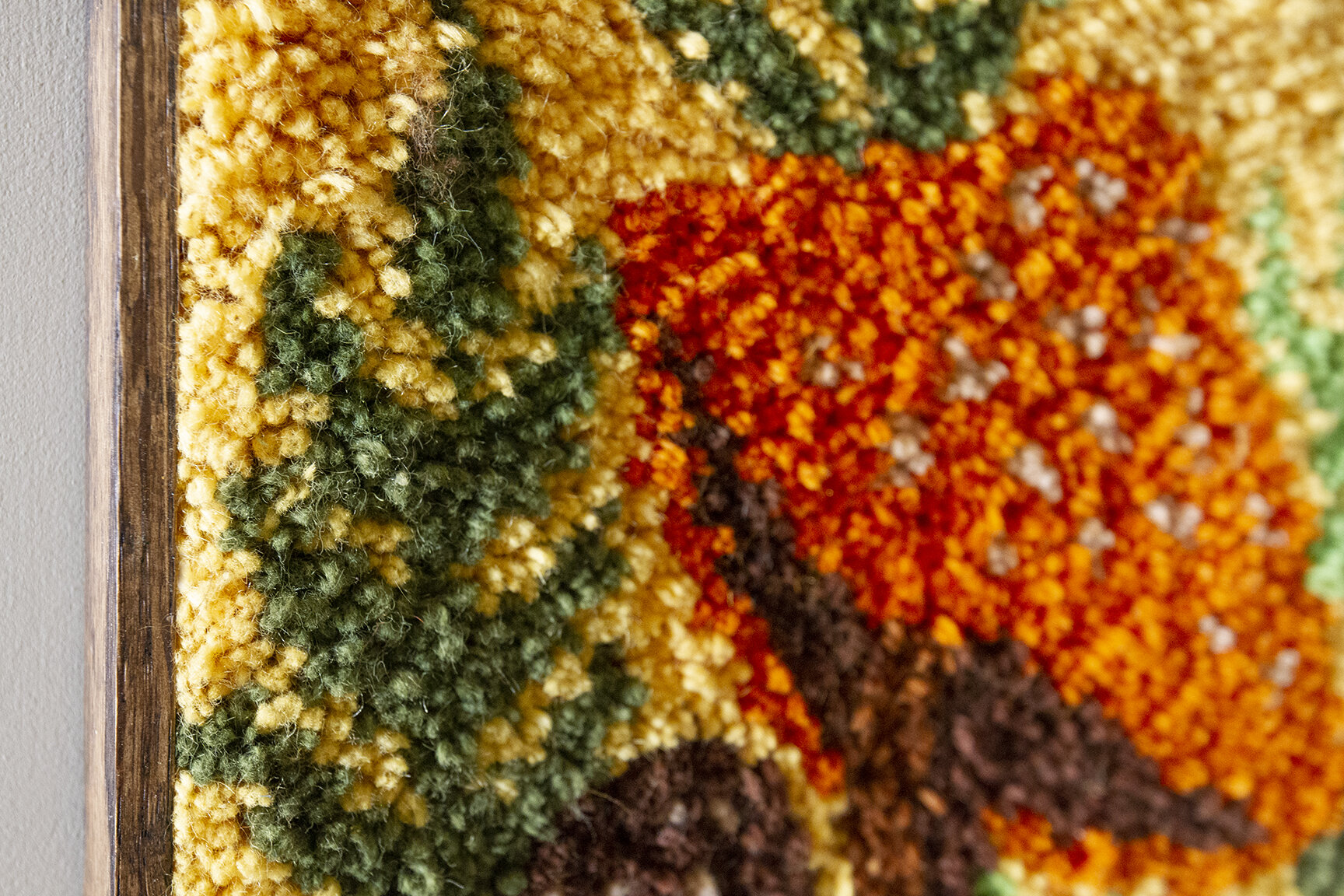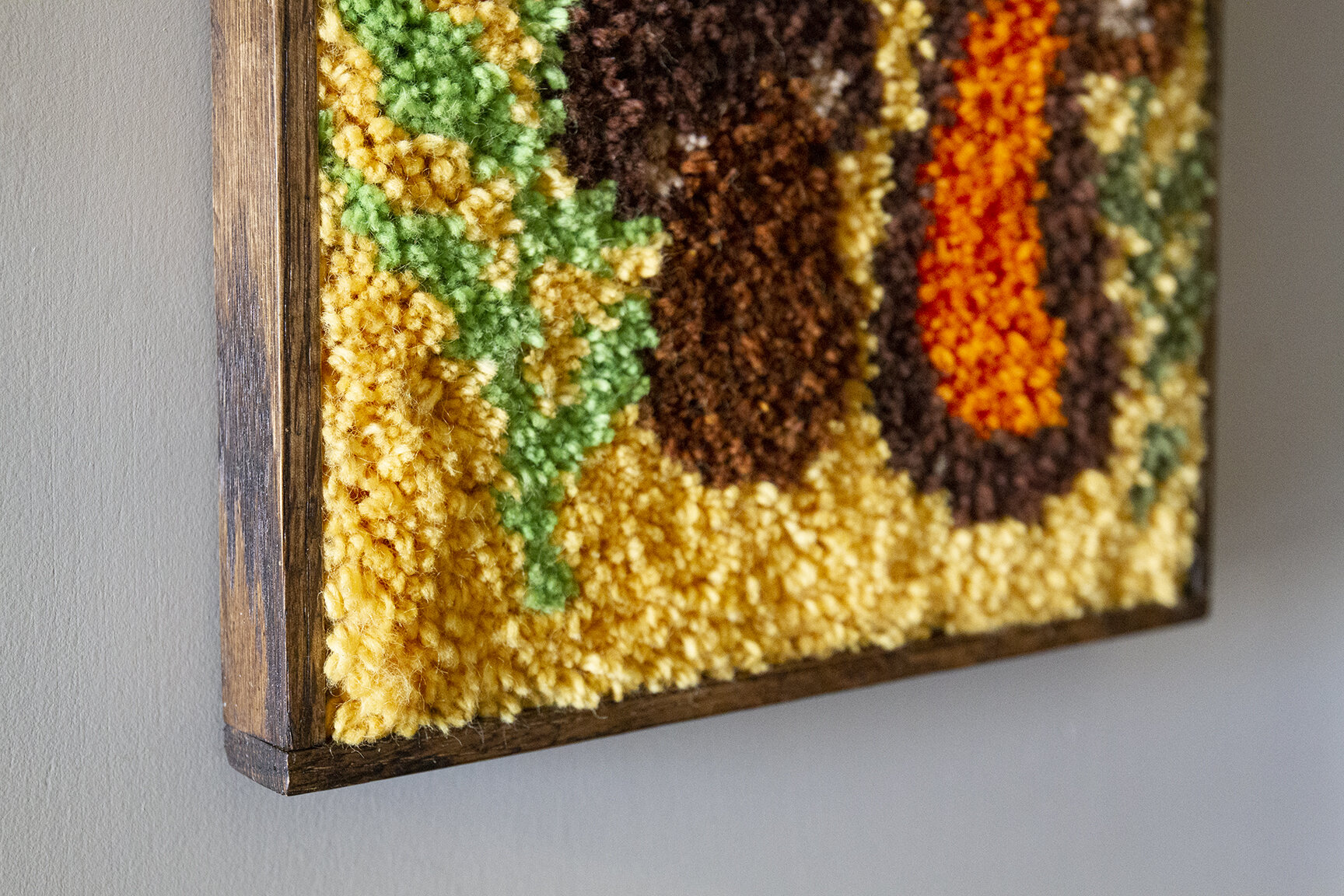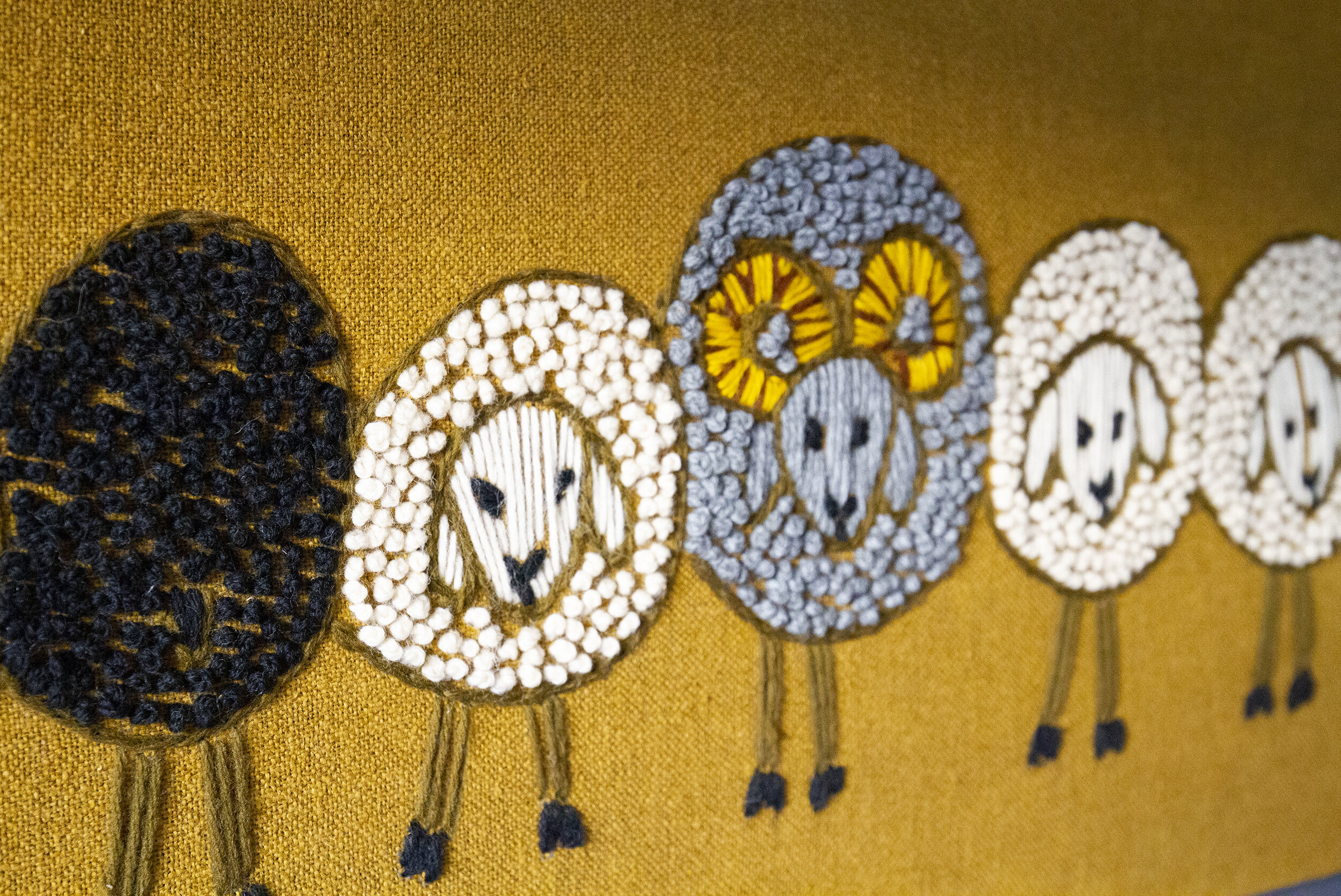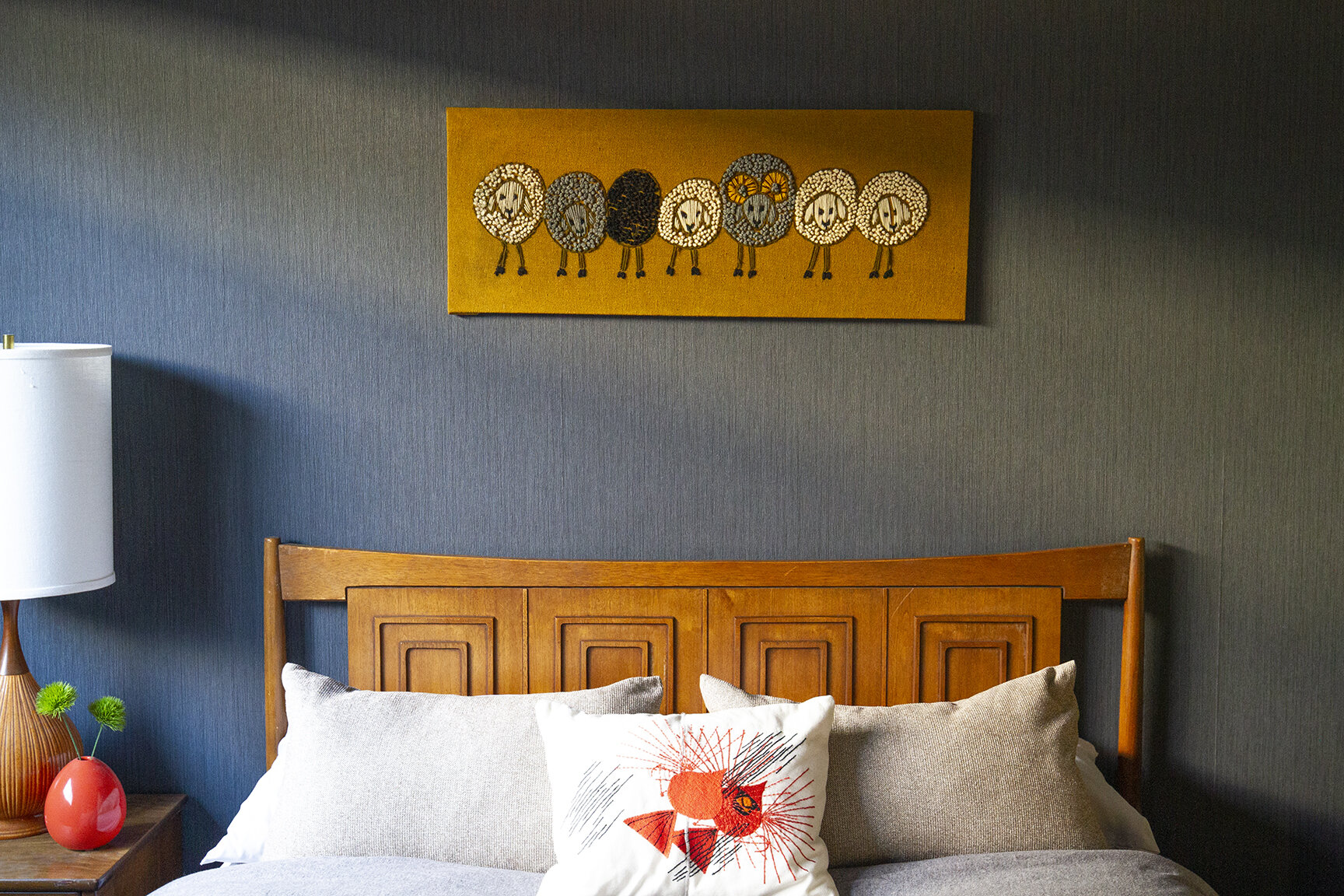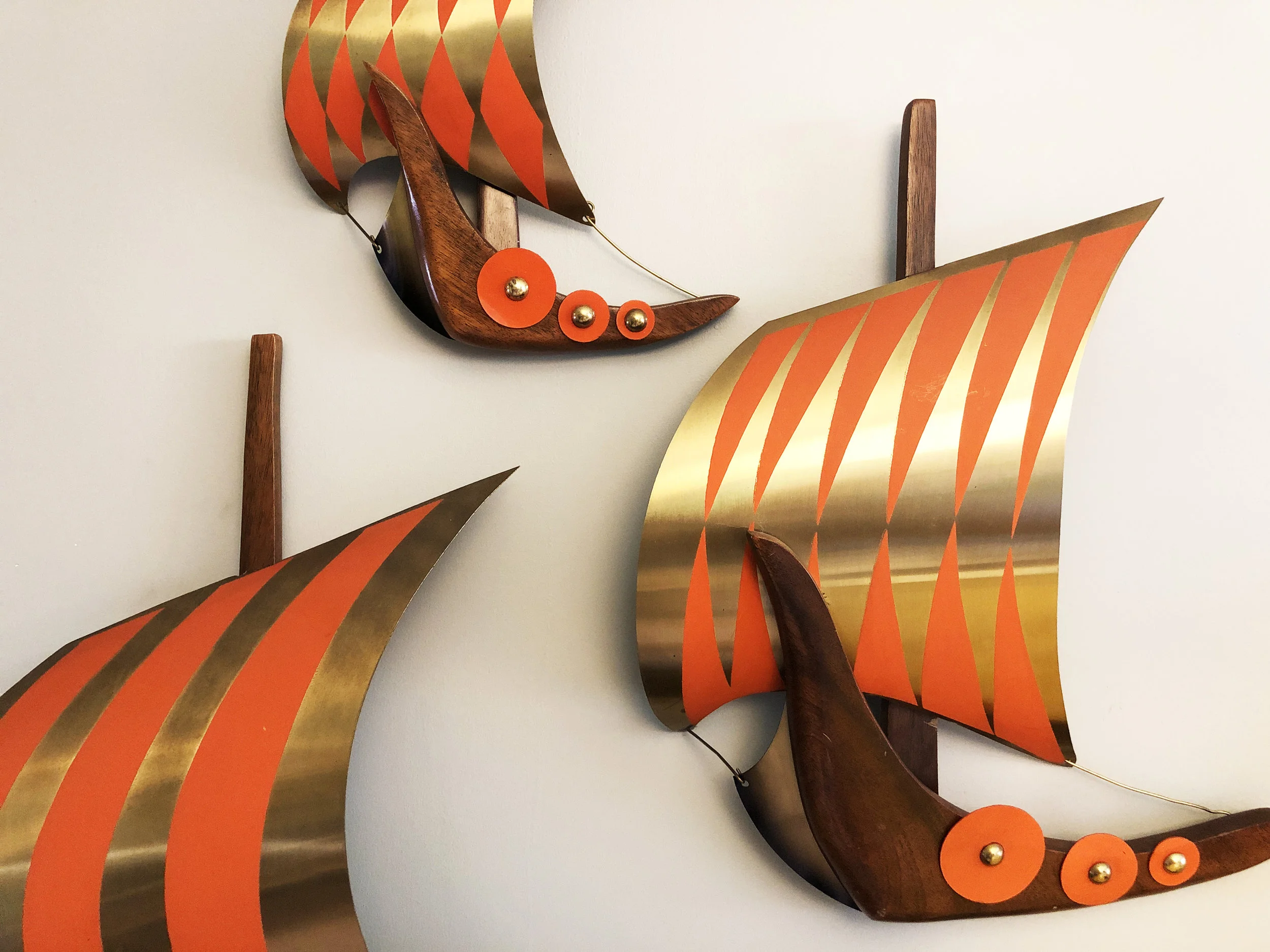High Fiber

A spontaneous road trip recently led me to a junk shop in the middle of nowhere. As one might expect, I found lots of…well, junk…stacked deep and sold cheap. From unopened toaster ovens to volumes of mildewy vinyl records, my mind struggled to keep up with my eyes as I browsed the towering piles surrounding me. As with most of my shopping trips, it’s seldom about what’s displayed out in the open, but instead what’s lurking in unexpected places that becomes the real treasure. In this case, it was a small, green cardboard box that led me to a wealth of fiber-rich wonder.
The box sat under a few other boxes in the gravel parking lot at the foot of a shopping cart filled with small kitchen electrics. The words “Forest scene latch rug brow[n]s / orange” caught my eye, and were enough to pique my vintage interests. I kneeled on the ground and lifted the lid to find a pristine, NOS latch hook kit, complete with yarn skeins, hook tool, mat, and instructions. Wow! I was amazed as I took inventory of the colorful time capsule. It was all there. Carefully packaged up sometime in the ‘60s or ‘70s and never started. The description on the box didn’t quite match the contents, however. The latch hook kit was instead mushrooms, also in period appropriate brown/orange scheme. I love mushroom art, and have a small collection around my home. This kit was definitely coming home with me. I decided I should probably open surrounding unmarked boxes since this kind of treasure was near. That’s when I unboxed another two complete latch hook kits — one the forest scene, and the other butterflies and flowers — all pristine and made by Bucilla, a popular yarn craft company both then and now. I gathered up the 3 boxes and headed home to start my crafts.

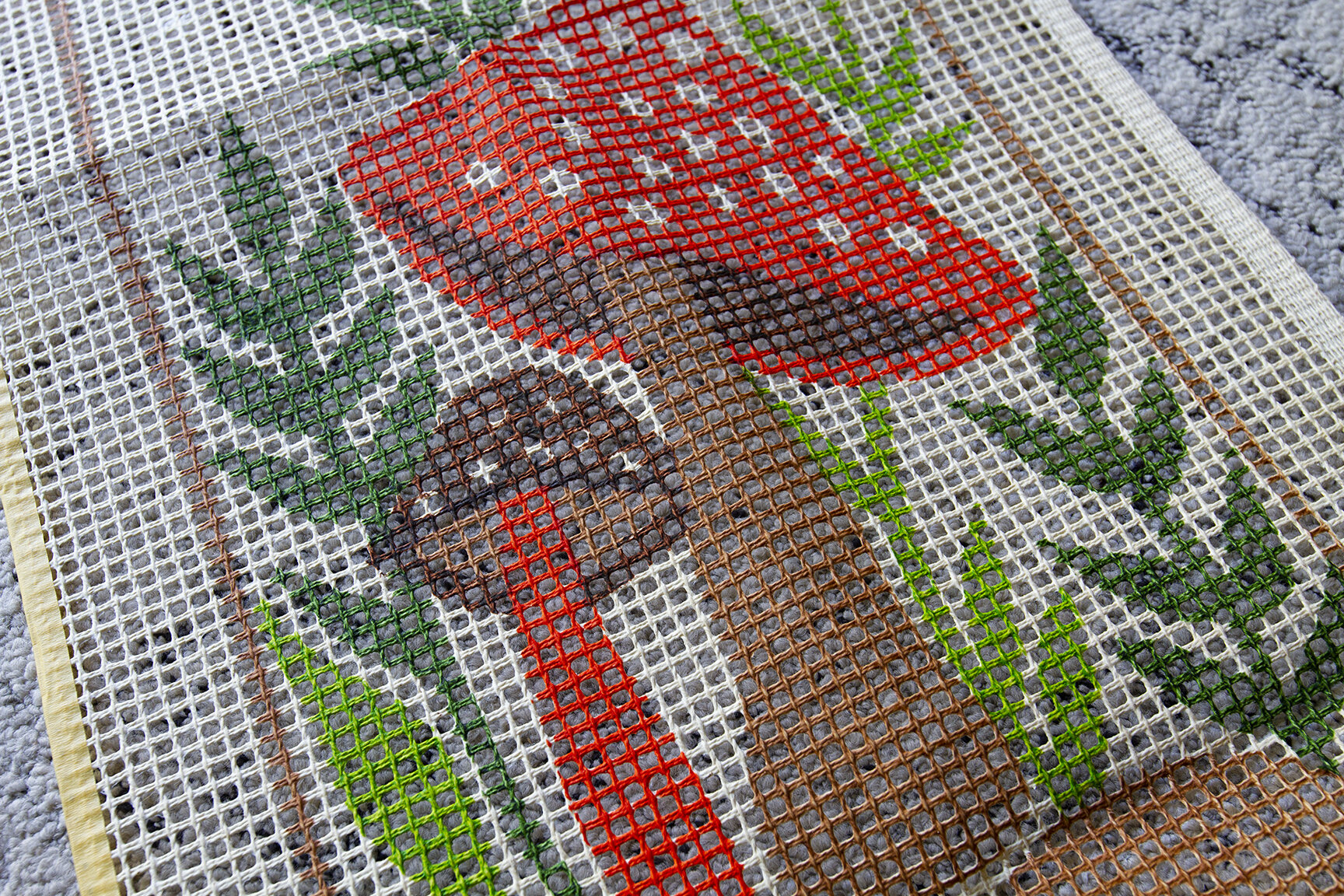
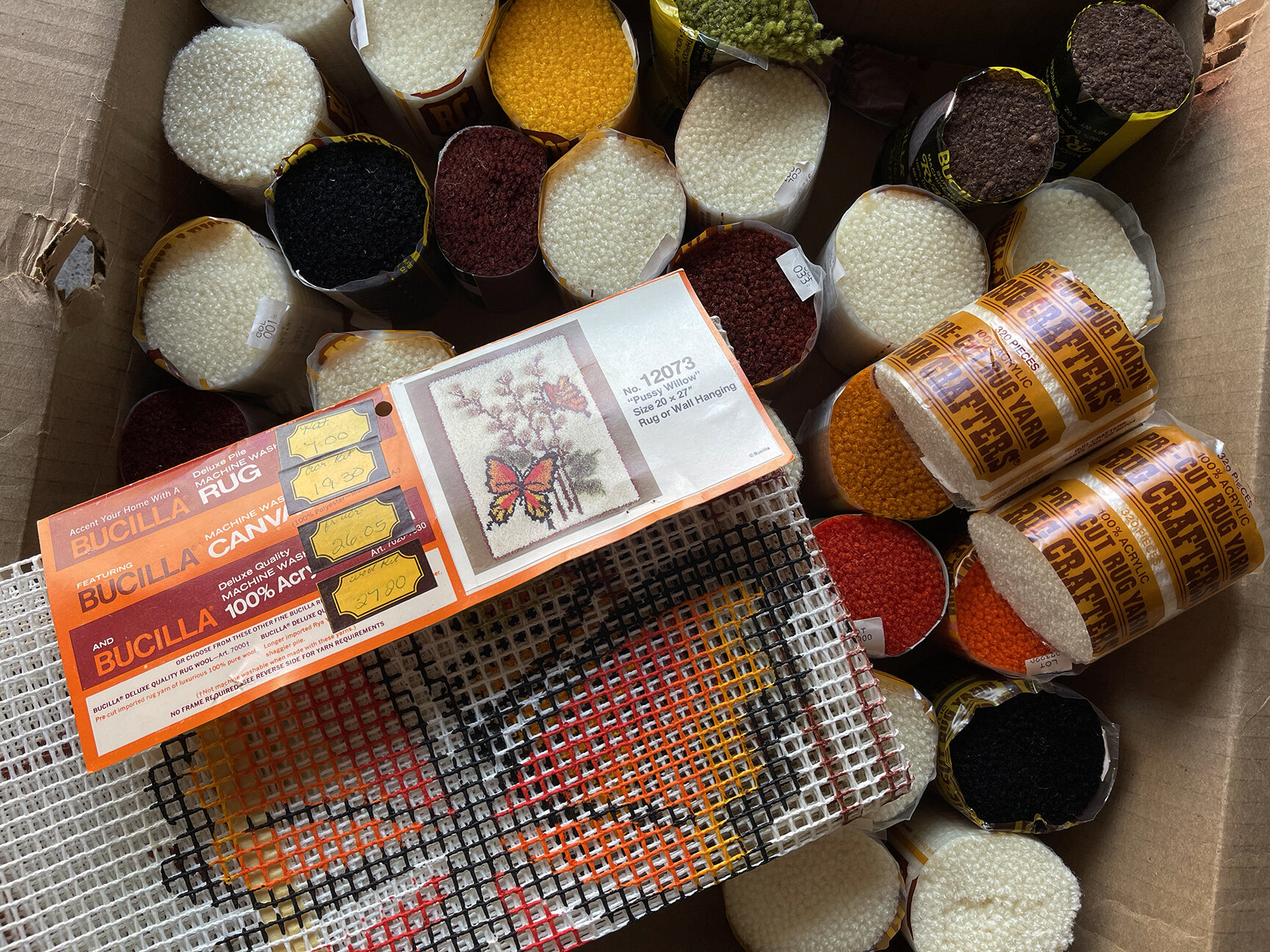
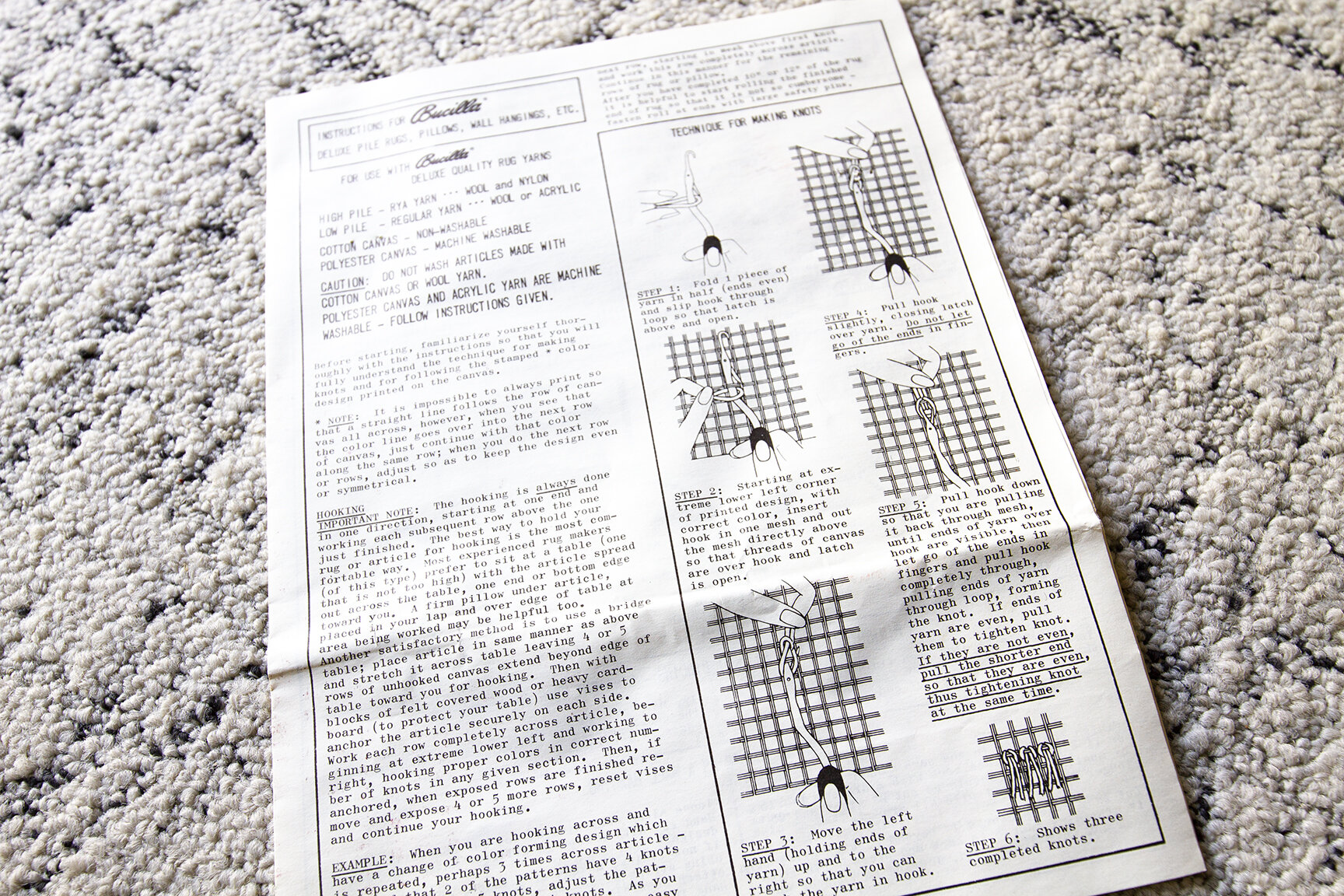
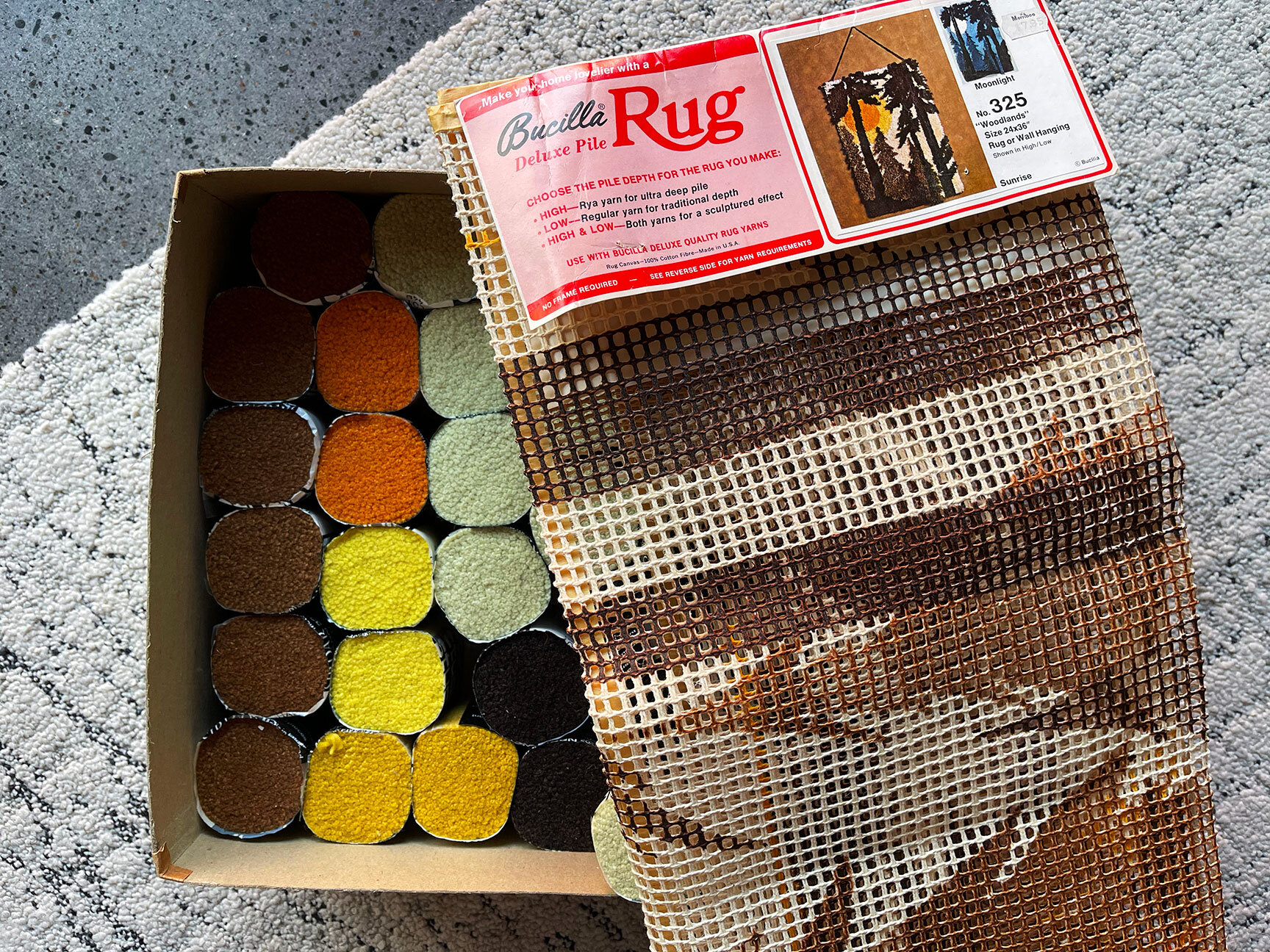
Hookin’ Heritage
Growing up, I remember my mom having a Holly Hobbie latch hook kit. My grandma gifted it to my mom when she was in the hospital with my baby brother. As my mom recalled, it was a great way to pass the time and relax. I remember playing with the latch hook tool when I was small, but I didn’t quite have the attention span to make a full size piece.
With so much time being spent at home in the past year, I figured this would be an excellent time to work on the mushroom latch hook kit. My initial thought was this would be a fairly quick project to get through, but as it turns out, latch hook requires a great deal of time, patience, and focus. No wonder I wasn’t interested in this craft as a kid! This particular mat measures 12” x 48”, or approximately 10,000 pieces of yarn. No small task, indeed. I was going to be working on this project for quite a while.
Helpful Instructions
When I sat down to start the mushrooms, I didn’t exactly remember how to use a latch hook tool. I hadn’t intended on needing the instructions, but it turns out, they were very necessary, especially for a novice like me. While it is possible to work on a latch hook sitting in a chair, the process was much easier with Bucilla’s recommendation to instead clamp the mat to a dining table. This method freed up both hands, and kept the mat in place, making it much easier to keep yarn ends even for a secure and uniform knot. If you decide to take on your own latch hook project, the instructions suggest placing a cloth between the clamps and the table to protect the surface. Plenty of useful information in that booklet!
Once I got my bearings, I couldn’t help but time myself for how fast (or slow) I was going. At my quickest pace, I was averaging about 10 minutes to complete 1 row. About 1/4 the way through, I stopped keeping track as it became less about the time, and more about enjoying the craft. If I had to guess, I’d say I spent around 20-25 hours with this project. It filled many nights and weekends through the winter months, but I really did find it relaxing, especially by the fire with a glass of wine and few records playing.
To finish this magnificent fiber art creation, I constructed a simple frame using stained wood furring strips for an authentic, vintage look. The bold colors and playful design add a vibrant punch to the hallway, and the vertical format generously fills the space with soft texture. It’s also a nice compliment to the woodland owl family hanging on the adjacent wall.
Fiber in Other Forms
Prior to acquiring these kits, latch hook was one of the few types of fiber art I didn’t have in my home. One of my favorite pieces is a yarn needlecraft, or crewel, of a bonsai juniper hanging over the sofa. Crewel embroidery dates back to the 17th century, utilizing a linen slate with marked guides, a large-eyed needle, and worsted wool. Like the latch hook, these crafts were sold as kits containing the canvas material, yarn, and tools. I brought this framed piece back from Hawaii several years ago, and it’s a daily reminder of a fantastic getaway. It was made by Paragon Needlecraft who sold their kits at various department stores in the ‘60s and ‘70s. Interestingly, a couple of these bonsai kits were recently shared with me by fans of the blog. It was so cool to see that more of these exist in the world, and are being enjoyed and celebrated by their owners.
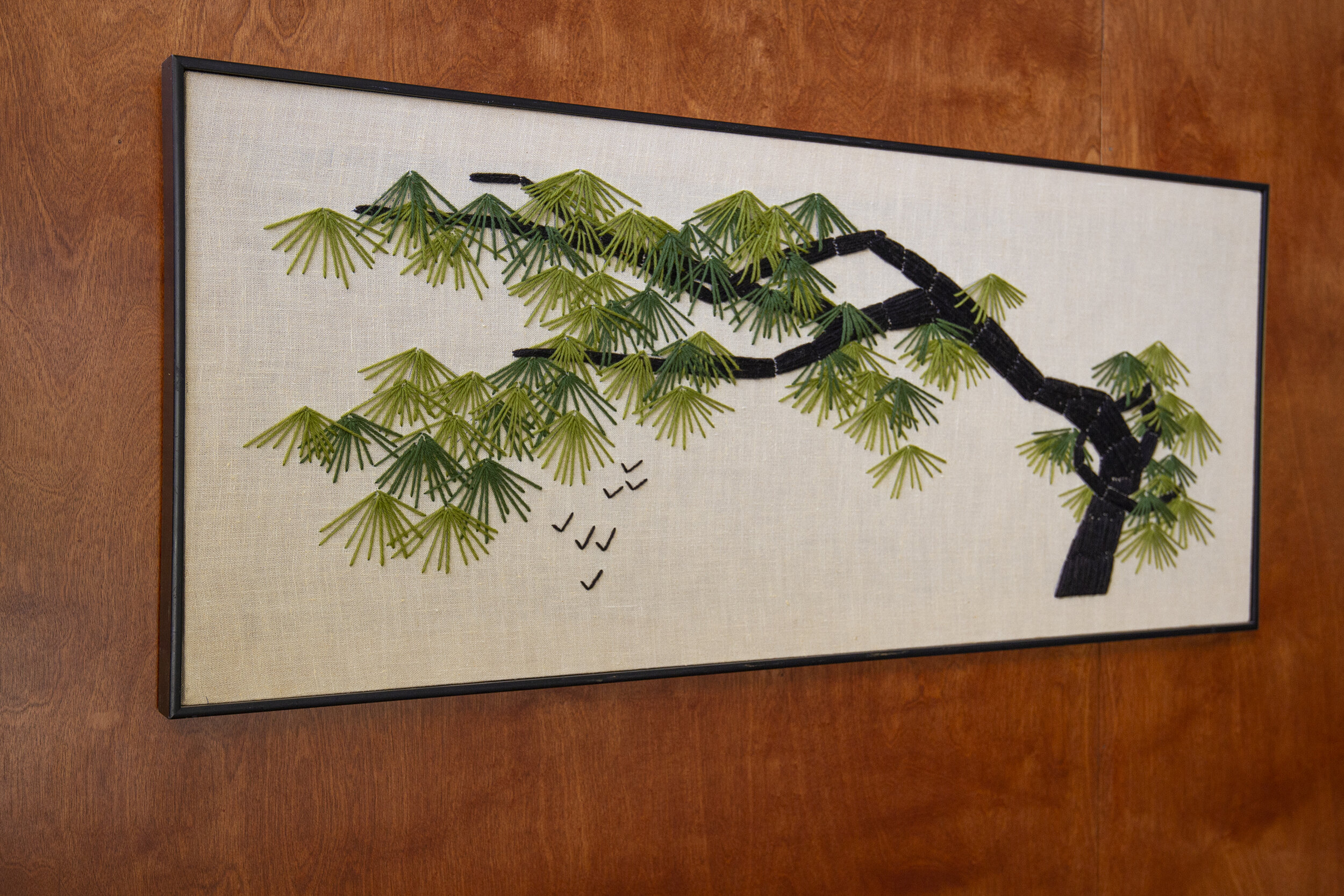
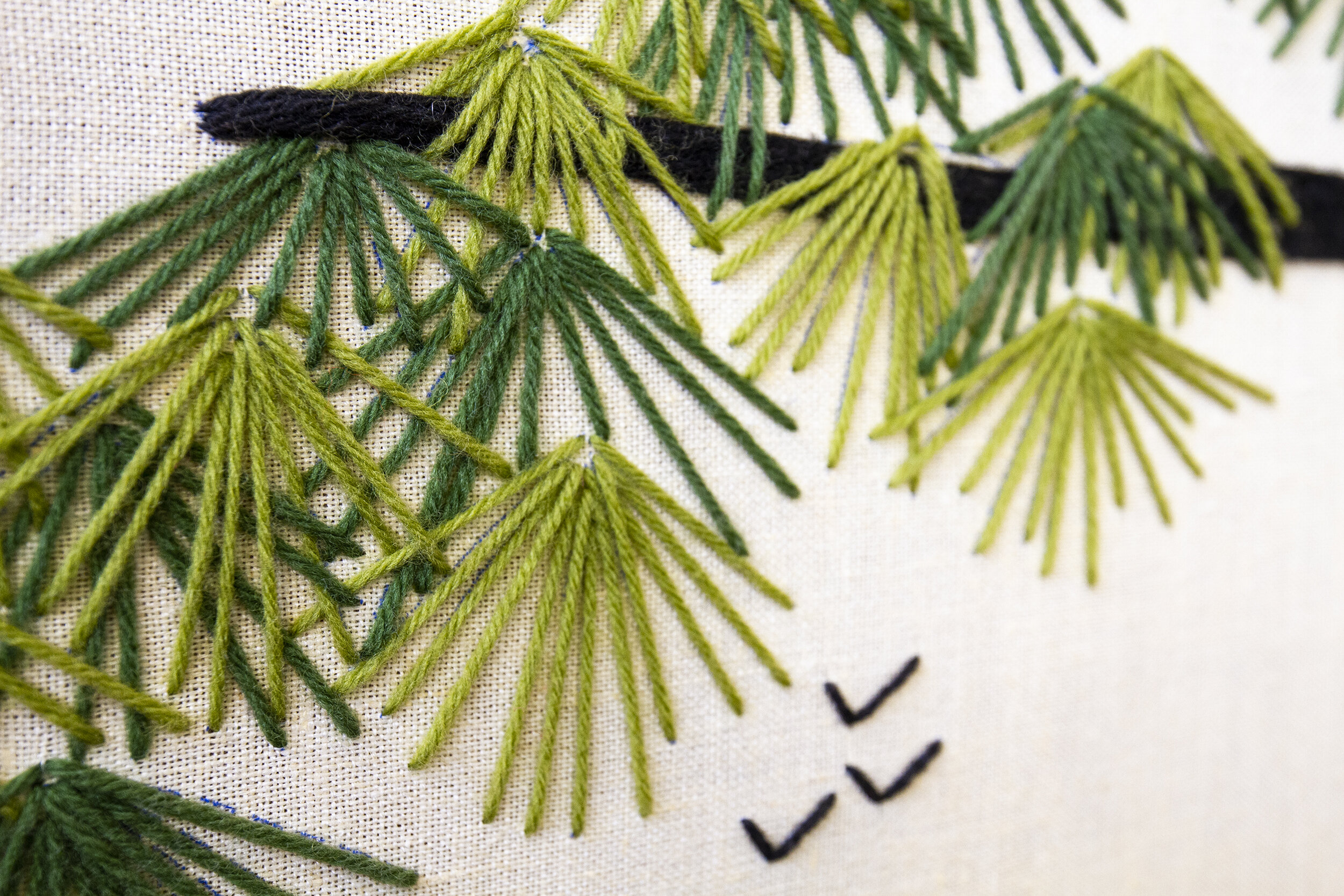
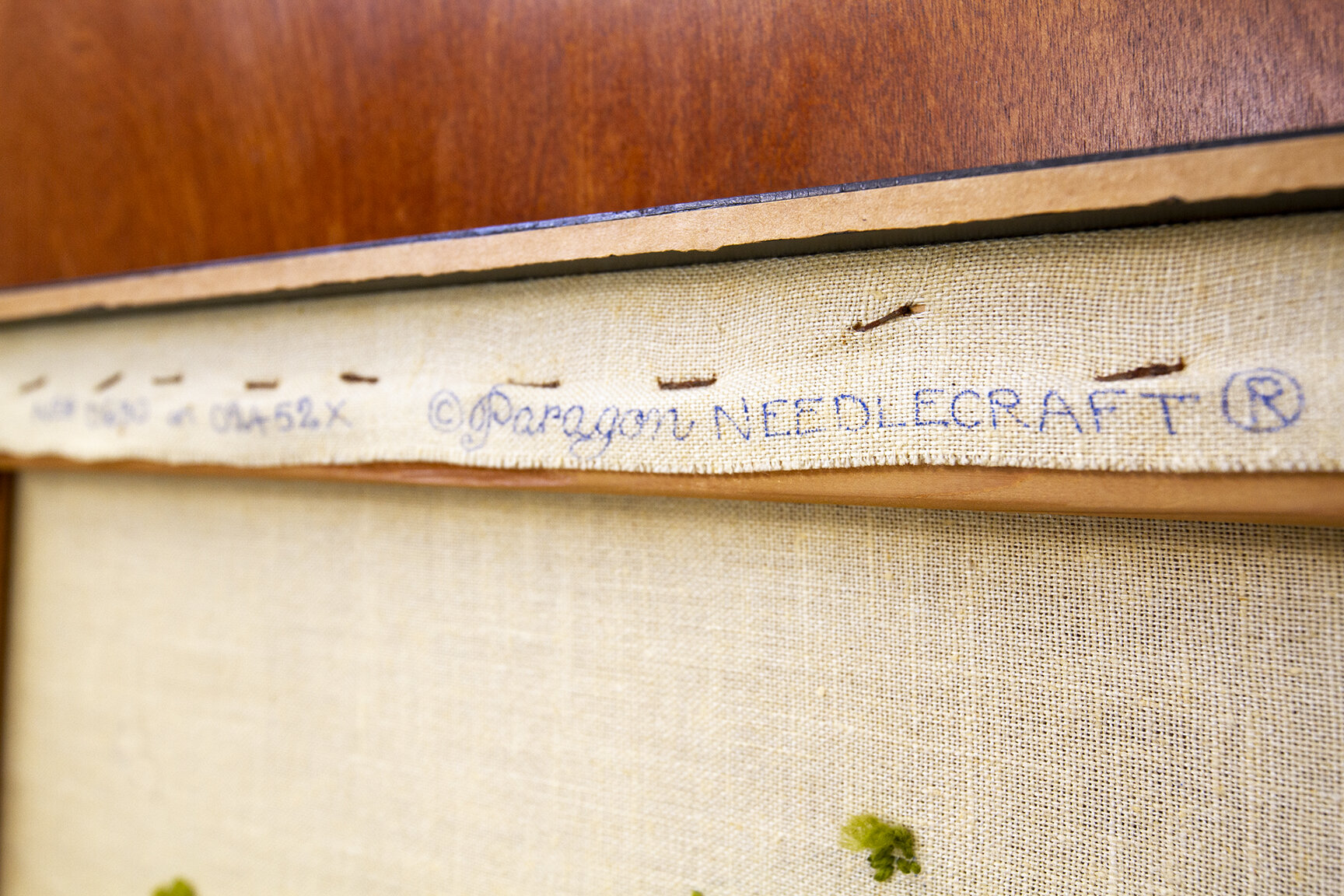
This finished vintage crewel features a French knot technique used to mimic nubbly sheep wool. It’s a warm, textural piece that makes for a cozy and whimsical composition over the guest bed.
Originally hailing from the midwest, my home just wouldn’t be complete without this modern take on “Home Sweet Home” cross stitch art — thankfully without the words and country kitsch. This one-of-a-kind housewarming gift was made by a friend. After completing the huge undertaking of painting the house during one of the hottest summers on record, this framed art reminds me of all the labor and planning that went into executing this color scheme.
As you can see, fiber art comes in many styles, shapes, colors, and sizes. If you’re in search a way to add visual interest to your space, these art forms are a fun and affordable approach to making a statement. Framed, finished pieces can often be found at thrift stores and antique shops, but if you’re looking for a new hobby and a great deal of satisfaction and accomplishment, a vintage kit is the way to go. Perhaps you’re even feeling inspired to purchase a blank canvas to create your own original masterpiece! If so, I’d love to see what you come up with. Whatever your route, here’s to many hours of happy hooking, everyone!



